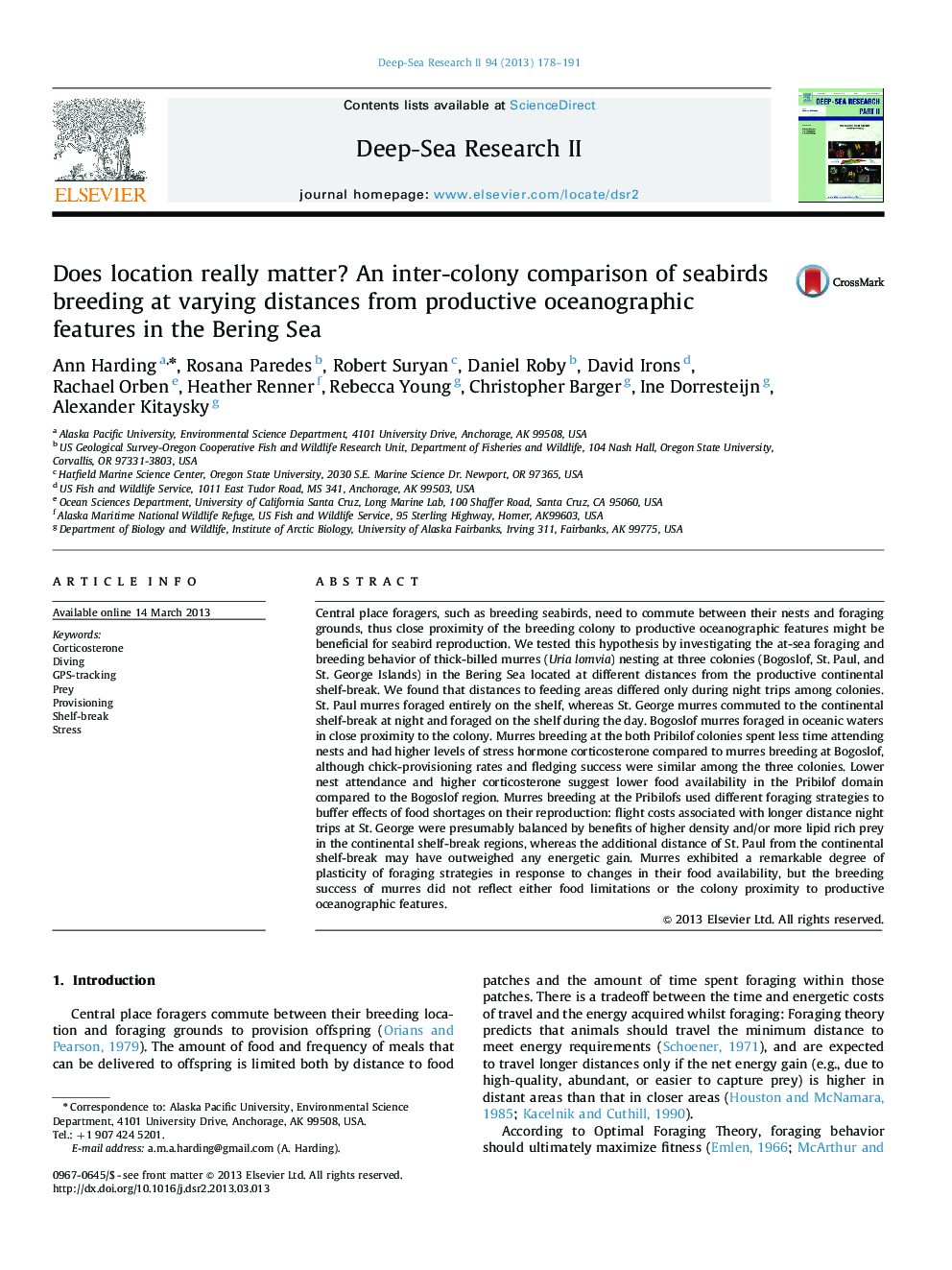| کد مقاله | کد نشریه | سال انتشار | مقاله انگلیسی | نسخه تمام متن |
|---|---|---|---|---|
| 4536470 | 1626445 | 2013 | 14 صفحه PDF | دانلود رایگان |

Central place foragers, such as breeding seabirds, need to commute between their nests and foraging grounds, thus close proximity of the breeding colony to productive oceanographic features might be beneficial for seabird reproduction. We tested this hypothesis by investigating the at-sea foraging and breeding behavior of thick-billed murres (Uria lomvia) nesting at three colonies (Bogoslof, St. Paul, and St. George Islands) in the Bering Sea located at different distances from the productive continental shelf-break. We found that distances to feeding areas differed only during night trips among colonies. St. Paul murres foraged entirely on the shelf, whereas St. George murres commuted to the continental shelf-break at night and foraged on the shelf during the day. Bogoslof murres foraged in oceanic waters in close proximity to the colony. Murres breeding at the both Pribilof colonies spent less time attending nests and had higher levels of stress hormone corticosterone compared to murres breeding at Bogoslof, although chick-provisioning rates and fledging success were similar among the three colonies. Lower nest attendance and higher corticosterone suggest lower food availability in the Pribilof domain compared to the Bogoslof region. Murres breeding at the Pribilofs used different foraging strategies to buffer effects of food shortages on their reproduction: flight costs associated with longer distance night trips at St. George were presumably balanced by benefits of higher density and/or more lipid rich prey in the continental shelf-break regions, whereas the additional distance of St. Paul from the continental shelf-break may have outweighed any energetic gain. Murres exhibited a remarkable degree of plasticity of foraging strategies in response to changes in their food availability, but the breeding success of murres did not reflect either food limitations or the colony proximity to productive oceanographic features.
Journal: Deep Sea Research Part II: Topical Studies in Oceanography - Volume 94, 1 October 2013, Pages 178–191